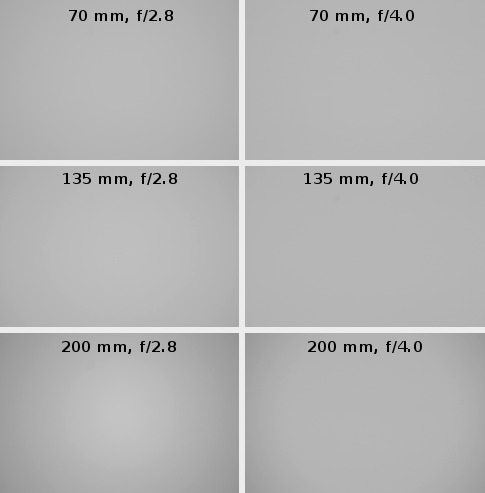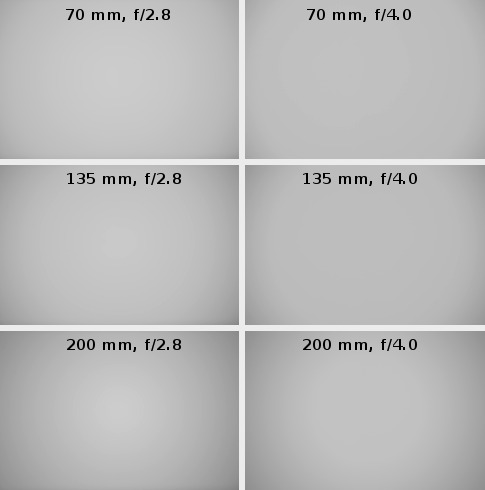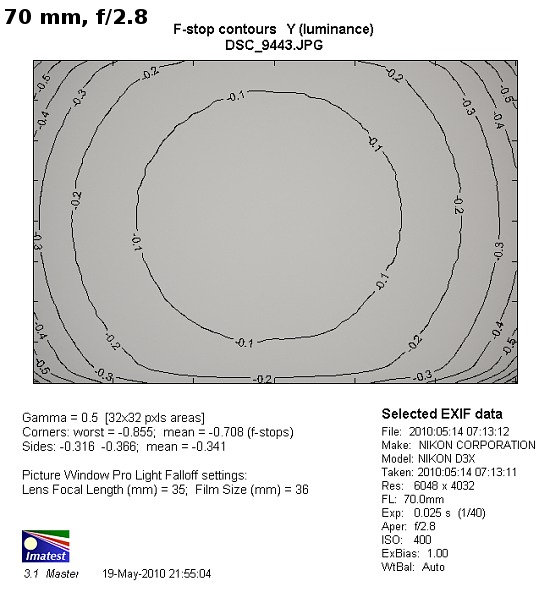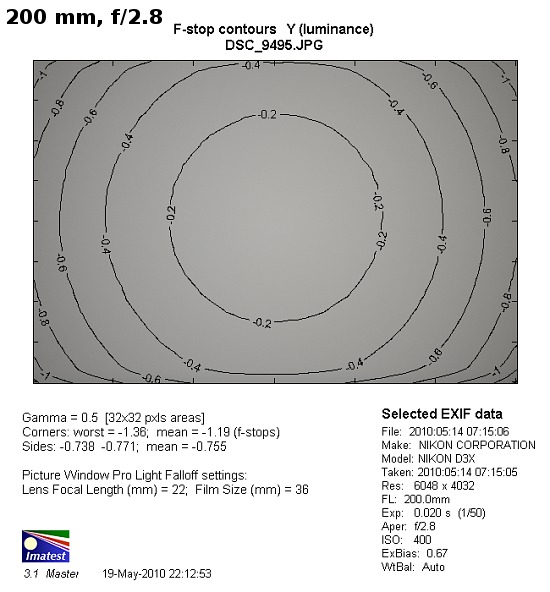Nikon Nikkor AF-S 70-200 mm f/2.8G ED VR II
8. Vignetting

At the shortest focal length the vignetting is the same as in the old version within the margin of error of course. The light fall-off in the frame corners by f/2.8 amounts to 10% (-0.30 EV) and it decreases to 4% by f/4.0.
Please Support UsIf you enjoy our reviews and articles, and you want us to continue our work please, support our website by donating through PayPal. The funds are going to be used for paying our editorial team, renting servers, and equipping our testing studio; only that way we will be able to continue providing you interesting content for free. |
- - - - - - - - - - - - - - - - - - - - - - - - - - - - - - - - - - - - - - - - - - - - - - - -
At longer focal lengths the new version starts showing its edge. At 135 mm and wide open the vignetting is 12% (so 5% lower) and it decreases to 4% by f/4.0.
The biggest brightness loss in the frame corners we notice at the maximum focal length. There, at maximum aperture, the vignetting amounts to 24% (-0.80 EV), by f/4.0 it decreases to 16% and by f/5.6 it becomes imperceptible reaching the level of 5%.
Now let’s see how the lens fares on full frame.

The 70 mm focal length doesn’t make us complain. At the maximum aperture the light fall-off in the frame corners is 22% (-0.71 EV) and it decreases to 14% on stopping down the lens by 1 EV. Further stopping down, this time to f/5.6, makes the problem disappear almost completely (9%).
In the middle of the focal lengths range the situation becomes slightly worse. At the maximum aperture we deal with the vignetting at the level of 28% (-0.96 EV) which decreases to 20% on stopping down the lens to f/4.0 and to 15% on stopping down to f/5.6. The vignetting disappears completely only by f/8.0, where it amounts to 9%.
Vignetting can be easily noticeable at the maximum focal length. By f/2.8 it amounts to 34%, by f/4.0 it is 26% and by f/5.6 it decreases by next 3%. By f/8.0 aperture we still get some chances to spot this aberration because it is 18%. By f/11 the situation is not much better because the brightness loss in the corners still reaches 14%.
Although these 34% at the maximum focal length seem to be a rather high value, we should take into account the fact that we deal here with a quite fast telephoto zoom lens and we test it on full frame. All these factors considered, there is really nothing to complain about. Full frame can be very demanding when it comes to lenses in this category and the vignetting level of 50% or even more is not so rare at all. The results of the Nikkor do look good from that perspective.
 |
 |






